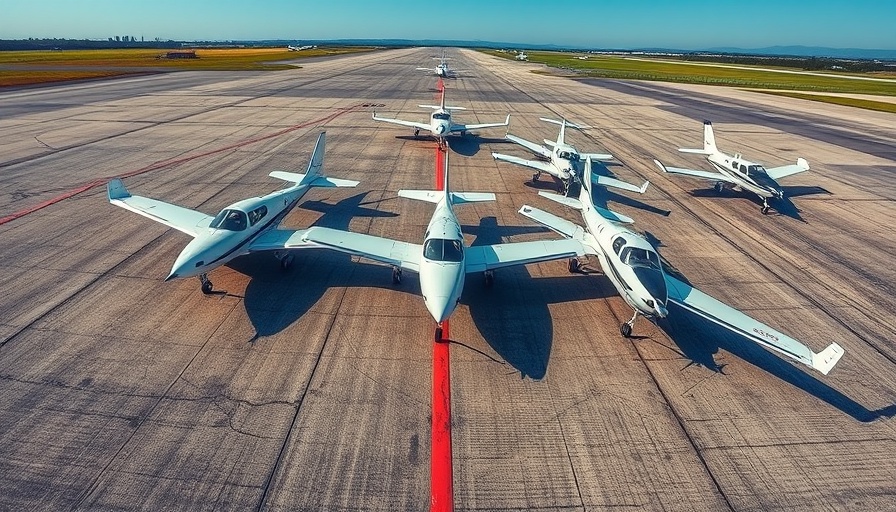
Discovering the Marvels of Six-Seater Planes
For those who have experienced the joys of general aviation, the thought of flying with friends or family often brings about the dilemma of space. A four-seat Cessna 182 can handle a family, but once luggage comes into play, it can quickly feel cramped. Thankfully, the world of six-seat aircraft provides an answer, offering more room, enhanced performance, and the ability to carry everyone comfortably on weekend getaways.
Why Choose Six-Seaters?
It's not just about the extra seats. Six-seaters are celebrated for their versatility. Whether you’re a vlogger seeking to capture stunning aerial landscapes, a sports team heading to an away game, or a family planning a vacation, these planes can accommodate various needs with ease. The expansive interior allows for ample legroom and storage for your sports gear or luggage, making every flight a breeze.
A Glance at Top Choices in the Used Market
With the rise of the used aircraft market, savvy buyers now have access to incredibly versatile six-seat aircraft at reasonable prices. Choices like the Beechcraft Bonanza A36, known for its smooth ride and reliable performance, and the Cessna 206, often hailed as a 'flying SUV' for its spacious cabin and unique loading options, are top contenders for potential buyers.
How to Decide Which Aircraft Fits Your Needs
When selecting a six-seat aircraft, consider various factors such as:
1. **Useful Load**: How much can you carry comfortably without feeling restricted?
2. **Cabin Comfort**: Is there enough room for passengers to move freely?
3. **Operational Costs**: Budget is always a factor in aviation—fuel efficiency can drive long-term savings.
4. **Runway Requirements**: Do you often fly into short or rough airfields?
Every pilot has unique preferences and requirements, which makes visiting aviation expos or speaking with fellow pilots invaluable when making your choice.
The Practical Benefits of Owning a Six-Seater
Owning a six-seat plane provides more than just transportation. It opens up a world of adventure and practicality. You can fly directly to remote locations, saving time on lengthy road trips. Plus, having a personal aircraft allows you to bypass the hassles of commercial airports — remember that time-consuming check-in process? Forget about it!
Learning to Fly — Your Ticket to Adventure
For those intrigued by the idea of handling a six-seater yet unsure about the flying aspect, investing in pilot training is a game-changer. **Learning to fly** not only equips you to operate these incredible aircraft but also offers freedom and flexibility for future adventures. Various flying schools are available, and many even offer aircraft rental, allowing you to try out different models before making a decision.
Conclusion: Your Journey Awaits
The selection of used six-seaters continues to expand, presenting pilots with fantastic opportunities for growth and adventure. Whether you need it for business or pleasure, a six-seater can significantly enhance your flying experience. So why wait? Consider stepping up to a six-seater, and embrace the limitless potential of flight!
Are you ready to take the leap? Start your aviation adventure today by exploring flight training options available in your area!
 Add Row
Add Row  Add
Add 




Write A Comment